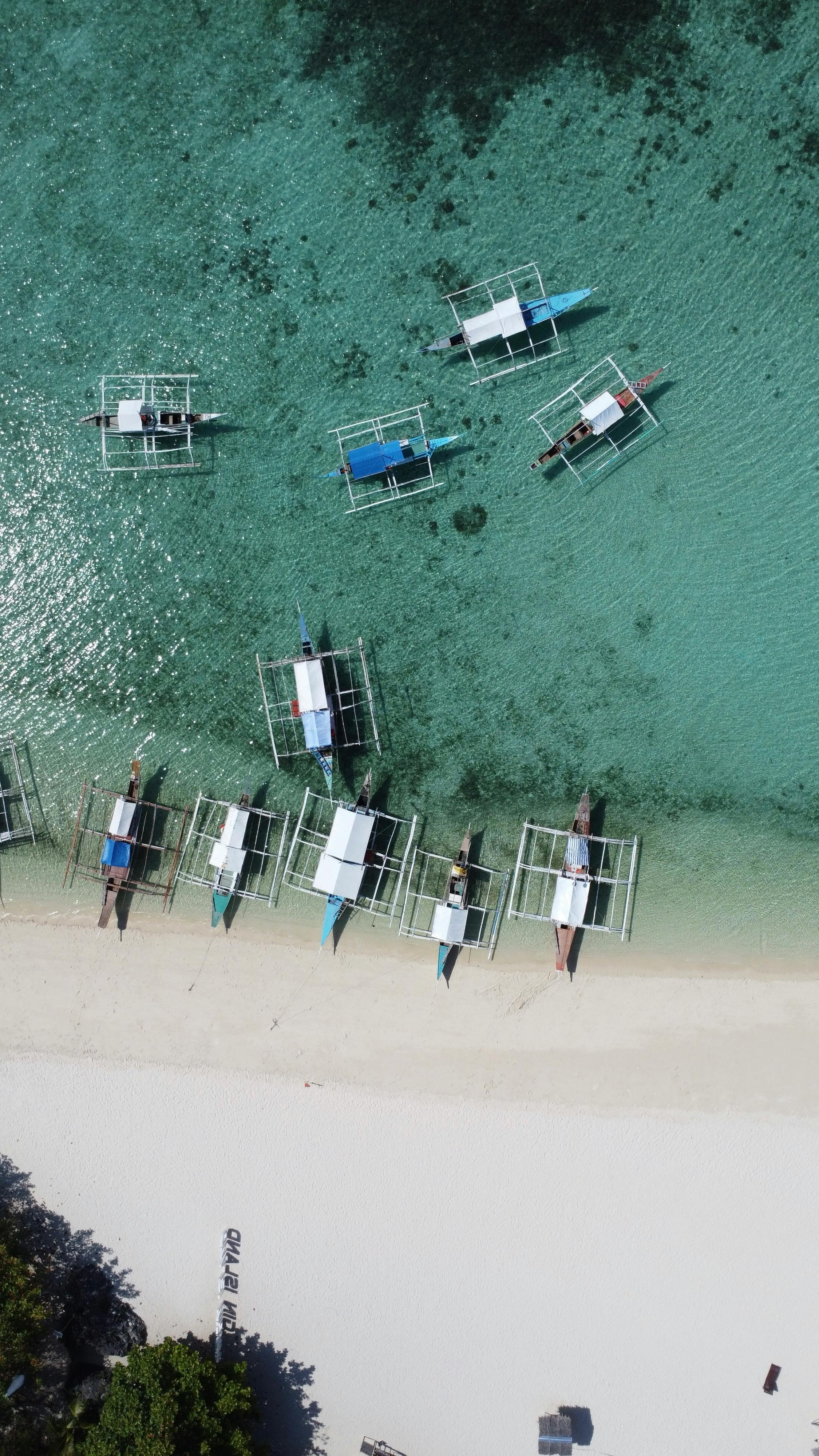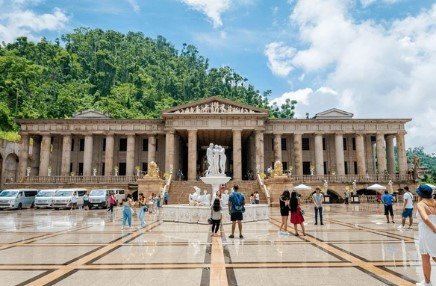
Things to do in the Philippines
Philippines Attractions
The Philippines is undeniably a fantastic holiday destination, renowned far and wide for its stunning natural beauty and vibrant, rich culture.
With over 7,000 islands to explore, it truly offers an amazing array of breathtaking landscapes, ranging from picturesque white sandy beaches and crystal-clear turquoise waters to lush, verdant mountain ranges and vibrant, colorful coral reefs teeming with marine life.
This beautiful country is home to some of the world’s most famous beaches, such as those found in the idyllic Boracay and the enchanting Palawan, making it a must-visit spot for travelers seeking sun, adventure, and relaxation.
Our exciting 12-day tour of the beautiful Philippines allows you to immerse yourself in the vibrant local culture and experience the authentic side of this stunning archipelago.
The Chocolate Hills
The Chocolate Hills are a geological formation located in the Bohol province of the Philippines. These unique hills are made up of at least 1,260, and possibly as many as 1,776, individual mounds spread over an area of more than 50 square kilometers. The hills are covered in green grass that turns brown during the dry season, giving them a chocolate-like appearance, hence the name1.
The Chocolate Hills are one of the Philippines' most popular tourist attractions and have been declared the country's third National Geological Monument. They are also proposed for inclusion in the UNESCO World Heritage List1. The hills are located in the towns of Carmen, Batuan, and Sagbayan.
Forest Camp
Forest Camp is a popular nature resort located in Valencia, Negros Oriental, near Dumaguete City. It's a fantastic destination for families and friends looking to enjoy a day out in a natural setting. Here are some key details:
Location and Accessibility
Location: Valencia, Negros Oriental, about a 20-minute drive from Dumaguete City.
How to Get There: You can rent a scooter in Dumaguete City for around 500 Pesos per day, or take a tricycle or jeepney.
Fort San Pedro
Fort San Pedro, also known as Fuerte de San Pedro, is a historic military defense structure located in Cebu City, Philippines. It was built by the Spanish under the command of Miguel López de Legazpi, the first governor of the Captaincy General of the Philippines, in 1565. The fort is situated in Plaza Independencia, near the pier area of the city.
The fort is triangular in shape, with two sides facing the sea and the third side fronting the land. The walls are 6.1 meters high and 2.4 meters thick, with towers that are 9.1 meters high. The fort has a total inside area of 2,025 square meters. It was originally made of wood but was later rebuilt with stone in the early 17th century to repel Muslim raiders.
Fort San Pedro served as the nucleus of the first Spanish settlement in the Philippines. During the Philippine Revolution at the end of the 19th century, it was attacked and taken by Filipino revolutionaries, who used it as a stronghold.
Today, Fort San Pedro is a popular tourist attraction and a historical park under the care of the Cebu City government. It houses a museum that contains preserved Spanish artifacts, such as paintings, sculptures, old photographs, and documents. The fort's spacious lawn also serves as a venue for various events, including weddings and birthdays
The Temple of Leah
The Temple of Leah is a grandiose structure located in the mountains of Busay, Cebu City, Philippines. Often referred to as the "Taj Mahal of Cebu," it was built by Teodorico Soriano Adarna in 2012 as a tribute to his late wife, Leah Albino-Adarna2. The temple is a symbol of undying love and dedication, much like the Taj Mahal in India.
The temple features a Greco-Roman architectural style, complete with granite columns, brass statues, and marble floors. It houses 24 chambers, including a library, art gallery, bar, and museum2. The main terrace offers a stunning view of Cebu City, making it a popular spot for sightseeing and photography.
Visitors can explore the temple's intricate designs, including statues of lions, angels, and gladiators. The centerpiece is a 10-foot-high statue of Leah, surrounded by trumpet-playing angels3. The temple is open to the public daily from 7 AM to 6 PM, with an entrance fee of ₱150 for adults and free admission for children aged ten and below.
The Basilica del Santo Niño
The Basilica del Santo Niño, also known as the Minor Basilica of the Holy Child, is a historic church located in Cebu City, Philippines. It is the oldest Roman Catholic church in the country, founded on April 28, 1565, by Fray Andrés de Urdaneta and Fray Diego de Herrera. The basilica was built on the spot where the image of the Santo Niño de Cebú, a representation of the Child Jesus, was found during the expedition of Miguel López de Legazpi.
The image of the Santo Niño de Cebú is believed to be the same one presented by Ferdinand Magellan to the chief consort of Rajah Humabon on the occasion of their royal baptism to Roman Catholicism on April 14, 1521. The basilica is a blend of Earthquake Baroque, Muslim, Romanesque, and Neo-classical architectural styles.
The basilica is not only a place of worship but also a significant cultural and historical landmark. It has been designated as a National Historical Landmark and a National Cultural Treasure. The church is also the center of the annual Sinulog Festival, held every third Sunday of January, which celebrates the Santo Niño
Tops Lookout
Tops Lookout, also known simply as "Tops," is a popular tourist destination located in the hills of Busay, Cebu City, Philippines. It offers stunning panoramic views of Cebu City, Mactan Island, and the surrounding mountains. Perched approximately 600 meters above sea level, Tops is a favorite spot for both locals and tourists to enjoy the breathtaking scenery, especially during sunrise and sunset.
The lookout area features viewing decks equipped with binoculars, picnic areas, and several cafés and food stalls where visitors can grab a snack or a cup of coffee while taking in the views. The entrance fee is around ₱100, making it an affordable and worthwhile activity.
Tops Lookout is accessible by private vehicle, motorcycle taxis (habal-habal), or public transportation from Cebu City. The road leading to Tops is well-paved but can be narrow and winding, so exercise caution while driving.
Magellan's Cross
Magellan's Cross is a significant historical landmark located in Cebu City, Philippines. It was planted by Portuguese explorer Ferdinand Magellan upon his arrival in Cebu on April 21, 1521. The cross is housed in a small chapel, known as the Magellan's Cross Pavilion, situated beside the Basilica del Santo Niño on Plaza Sugbo.
The original cross is encased in another wooden cross made of tindalo wood to protect it from people who chipped away parts of the cross, believing it had miraculous powers. The pavilion itself is an octagonal structure made of coral stone, built in 1834 under Spanish colonial rul.
The ceiling of the pavilion features a mural depicting the baptism of Rajah Humabon and his household by Fr. Pedro Valderrama, as well as the planting of the cross by Magellan. This site is not only a religious symbol but also a cultural treasure, declared a National Cultural Treasure of the Philippines in 2021.
If you ever find yourself in Cebu, visiting Magellan's Cross is a must to appreciate its historical and cultural significance.
The Philippine jeepney
The Philippine jeepney is an iconic mode of public transportation in the Philippines. Originally made from surplus military jeeps left by the U.S. after World War II, jeepneys have evolved into colorful, artfully decorated vehicles that are a symbol of Filipino culture and ingenuity. They are known for their crowded seating and kitsch decorations, which often include vibrant paint jobs, religious symbols, and various ornaments.
Jeepneys are a vital part of daily life in the Philippines, providing an affordable means of transportation for millions of Filipinos. They operate on fixed routes, and passengers can hop on and off at designated stops or anywhere along the route by signaling the driver
The Dumaguete Bell Tower
The Dumaguete Bell Tower, also known as the Campanario de Dumaguete, is one of the most iconic landmarks in Dumaguete City, Philippines. Built in the 1760s, this historic bell tower served as a watchtower to warn residents of incoming pirate attacks2. It stands adjacent to the Saint Catherine of Alexandria Cathedral, also known as the Dumaguete Cathedral.
The bell tower is a significant historical and religious site. It was used to call residents to mass and to alert them of danger. Today, it remains a symbol of resilience and vigilance. The tower is surrounded by a lush garden and features a grotto dedicated to Our Lady of Perpetual Help, where visitors can light candles








